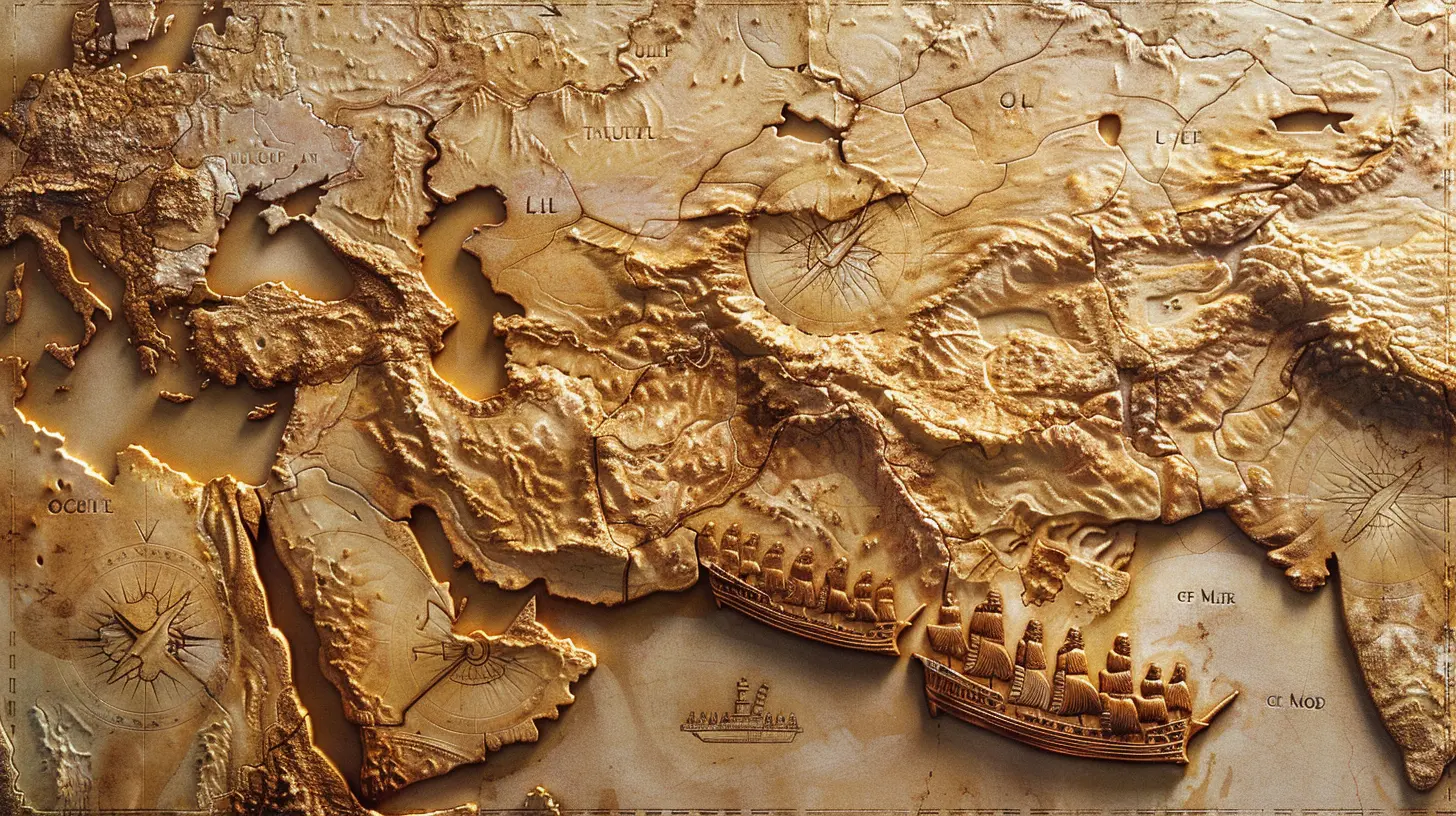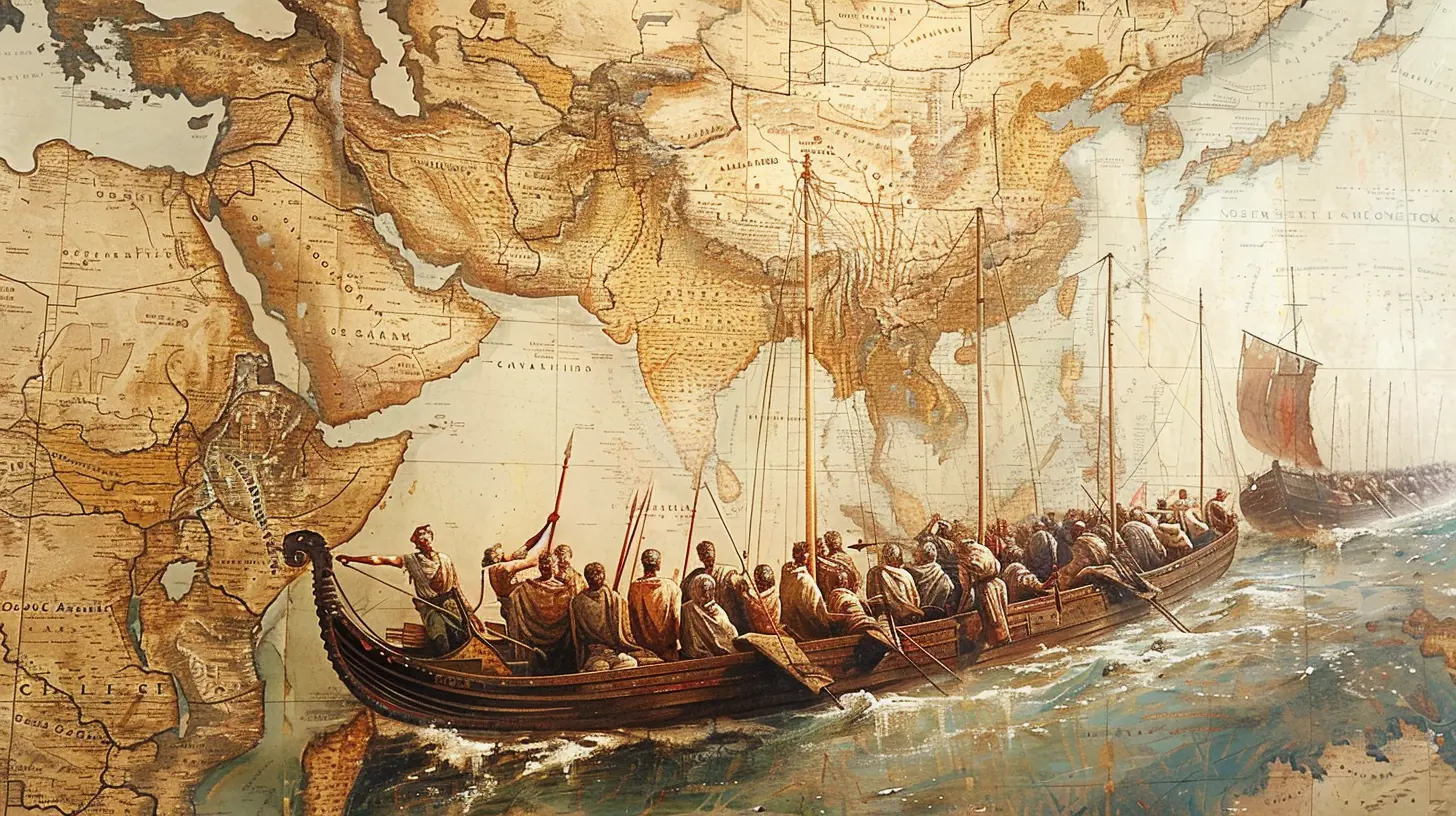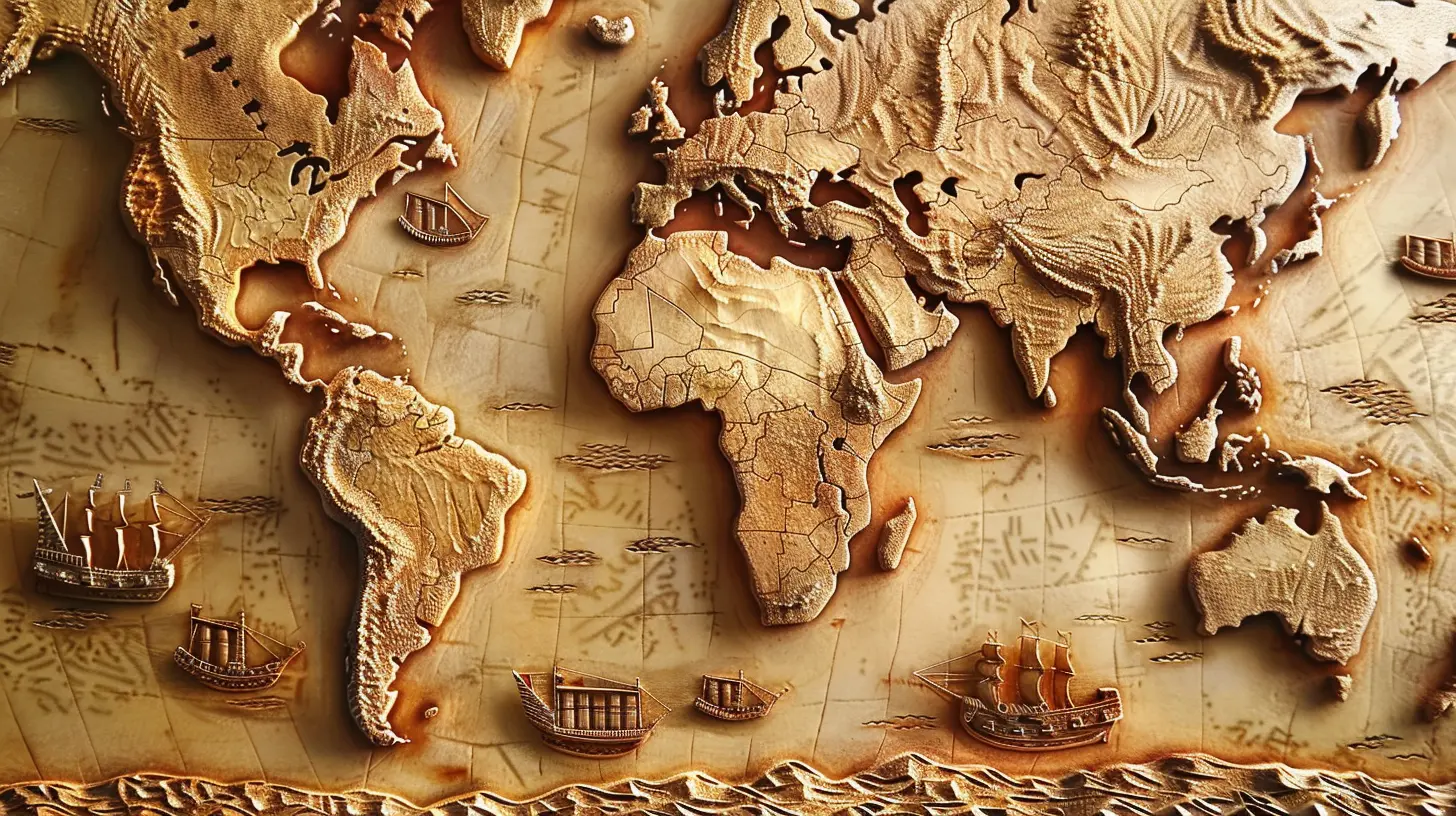How Trade Routes Shaped the Ancient World
28 July 2025
Trade routes were the lifelines of ancient civilizations. They weren’t just dusty roads or vast sea paths; they were the veins that pumped wealth, culture, and innovation across continents. Imagine a world where spices from India, silk from China, and gold from Africa all found their way into the bustling markets of Rome. That’s the magic of trade routes—they connected people, economies, and ideas in ways that shaped history.
The Silk Road: More Than Just Silk
When we talk about ancient trade, the Silk Road is the first thing that comes to mind. Stretching from China to the Mediterranean, this network of routes wasn’t just a marketplace—it was a melting pot of cultures.What Traveled The Silk Road?
- Goods: Silk from China, spices from India, glassware from Rome, and precious metals from Persia.- Ideas: Buddhism spread from India to China; medical knowledge, mathematical concepts, and artistic styles also traveled.
- Diseases: Not everything traded was beneficial—plagues and epidemics found their way from one civilization to another.
The Silk Road wasn’t a single path but a web of routes, both overland and maritime. It shaped economies and led to the rise and fall of empires. Think of it as the internet of the ancient world—except instead of emails, people exchanged goods, stories, and philosophies.
The Spice Trade: A Price Worth Fighting For
Spices were more valuable than gold in ancient times. The Spice Trade fueled maritime exploration and even triggered wars.Why Were Spices So Important?
- Preservation: Before refrigeration, spices helped keep food from spoiling.- Medicine: Many spices were used for healing; clove, cinnamon, and turmeric were sought after for their medicinal properties.
- Flavor: Let’s be honest, food without spices is just boring.
The demand for spices led to epic sea voyages. Arabian traders controlled much of the spice flow, but eventually, European explorers, like Vasco da Gama, ventured around Africa to reach India. The race for control over spice-producing lands led to colonization and changed global power dynamics forever.
The Trans-Saharan Trade: Gold, Salt, and Power
While the Silk Road connected Asia and Europe, Africa had its own powerful trade network—the Trans-Saharan Trade Routes. These routes linked West African kingdoms, such as Mali and Ghana, with the Mediterranean.What Was Traded?
- Gold: West Africa was rich in gold, making it a center of wealth.- Salt: Just as valuable as gold in some regions, salt was necessary for preserving food.
- Slaves: A darker side of trade, human trafficking existed even in ancient times.
One remarkable figure from this era was Mansa Musa, the emperor of Mali. His pilgrimage to Mecca in the 14th century, carrying so much gold that it disrupted economies along the way, is still legendary. The wealth accumulated through these trade routes helped construct impressive cities like Timbuktu, which became centers of learning and culture.
The Mediterranean Trade Network: The Heart of the Ancient Economy
The Mediterranean Sea was essentially a highway for trade. The Greeks, Phoenicians, Romans, and Egyptians all depended on it for commerce.Key Players in Mediterranean Trade
- Phoenicians: Often called the "truck drivers" of the ancient world, they established trading hubs all over the Mediterranean.- Romans: Used trade to feed their massive empire, importing grain from Egypt and luxury goods from the East.
- Greeks: Developed extensive maritime routes and spread their culture through commerce.
The Mediterranean wasn’t just a marketplace—it was a battleground. Wars were often fought over control of trade routes. Think of Carthage vs. Rome; their conflict, the Punic Wars, was largely about who controlled the lucrative Mediterranean trade.
The Indian Ocean Trade: A Maritime Superhighway
Forget land routes—ancient mariners used the Indian Ocean like a vast interstate system. This trade network connected East Africa, the Arabian Peninsula, India, and Southeast Asia.What Made This Trade Unique?
- Monsoon Winds: Traders used predictable seasonal winds to sail across vast distances.- Diverse Goods: Ivory, gold, and slaves from Africa; spices from India; silk from China.
- Cultural Exchange: Islam spread to Indonesia and East Africa through these trade links.
The Indian Ocean trade was less centralized than the Silk Road but just as influential. It contributed to the rise of coastal cities like Kilwa, Calicut, and Malacca, turning them into bustling economic hubs.
The Impact of Trade Routes on Civilization
Trade routes weren’t just about moving goods—they shaped societies in profound ways.1. Economic Growth
Cities along trade routes thrived. Think of Constantinople, Baghdad, and Venice—these places became powerhouses because of their strategic locations.2. Cultural Exchange
From language to religion and art, trade routes blended cultures. This is why you see Greek influences in Indian architecture or why Arabic numerals are now standard worldwide.3. Technology and Innovation
Merchants didn’t just carry goods; they carried knowledge. Paper-making techniques from China spread to the Middle East, eventually reaching Europe and sparking revolutions in literacy and governance.4. Wars and Conflict
The downside? Trade routes were hotly contested. Empires fought over them, pirates raided them, and fortunes rose and fell depending on who controlled them.Conclusion
Trade routes weren’t just roads and sea lanes; they were the arteries of the ancient world. They spread goods, ideas, and even diseases, influencing every aspect of life. Without them, history would have taken a vastly different course. So next time you enjoy a cup of coffee, wear silk, or use spices in your food, remember—you’re experiencing the legacy of ancient trade routes.all images in this post were generated using AI tools
Category:
History LessonsAuthor:

Olivia Chapman
Discussion
rate this article
1 comments
Yvonne Sheppard
Explore history’s connections; inspire your journey!
August 6, 2025 at 12:44 PM

Olivia Chapman
Thank you! Trade routes were indeed vital in shaping cultures and connections throughout history, offering invaluable lessons for our journeys today.


